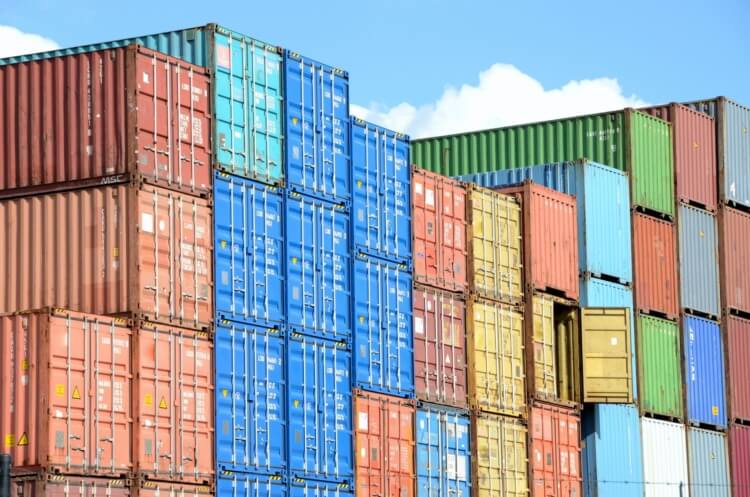
Our Projects are
Transforming African Trade
Quick Contacts
2nd Floor, Fidelity Insurance Centre Waiyaki Way, Westlands

Kenya’s export value increased by 17 per cent in 2021 to hit KSh 666.7 billion (US$ 5.5 billion) compared to KSh 567.4 billion (US$ 4.7 billion) in 2020.This is according to the latest data from the Kenya Trade Network Agency (KenTrade) Business Intelligence Tool that shows that the increase was influenced by earnings from top agricultural products (tea and horticultural products).
As per the report, tea and horticulture registered about KSh 296 billion (US 2.4 billion), a 44.4 per cent of the total domestic exports.The export volumes increased from 643.7 billion tonnes to 743.7 billion tonnes in 2021 with improved exports in clothing accessories and agricultural products.
“Through the trade facilitation platform, Kenya Exported approximately 1.2 million tonnes of agricultural products especially tea and horticulture that still stand as our main export,” the report states.
Uganda remains Kenya’s largest market, exporting goods worth KSh. 91.6 billion (US$756 million), followed by Netherlands at KSh 61.6 billion (US$510 million) and USA at KSh 59.5 billion (US$ 493 million).
The African Market, Europe and Asia are some of the highest export regions, yielding an export average of KSh 170 billion (US$1.4 billion).
On the other hand, the total value of imports increased by 30.9 per cent from KSh 1.6 trillion (US$ 13 billion) in 2020 to KSh 2.1 trillion (US$17.4 billion) in 2021, with petroleum contributing to 67 per cent of the increase in the import bill.
Petroleum imported into the country for the year 2021 amounts to an estimate of KSh. 336 billion and industrial machinery imported valued at KSh. 255 billion for the same period in 2021.
“Food products such as wheat, maize and rice rose in the value of the imports realised through the Kenya TradeNet system. The imports that are consumed majorly in the country are wheat, which is the highest imported commodity amounting to approximately 1.8 million tonnes, iron, and steel and cement clinker with 1.7 million and 1 million tonnes, respectively. Other commodities imported in high tonnage for the year 2021 include animal, vegetable fat and oil, chemical fertilisers and rice,” the report shows.The volume of trade in the year under review amounted to 2.8 trillion compared with 2.2 trillion in the year 2020.
Commenting on the report, KenTrade Chief Executive Officer Amos Wangora said the findings on both the imports and the exports are made possible through the availability and the increased use of the TradeNet System.”We have recently made an upgrade of the Kenya TradeNet System to Trade Facilitation Platform (TFP) which has since made the Partner Government Agencies and Users of the system enjoy vast advantages. The platform is an advancement of the new technology which is robust in nature,” Wangora noted.
TFP has integrated with various Partner Government Agencies namely Kenya Maritime Authority (KMA), Kenya Ports Authority (KPA), Kenya Plant Health Inspectorate (KEPHIS), Agriculture Food Authority Directorate, Tea Board Of Kenya, Port Health and upcoming integration with Kenya Revenue Authority (KRA) and KEBS (Kenya Bureau of Standards).
The Trade Facilitation platform has great capacity, is user-friendly, and scalability and it has in the recent past attracted over 35 Partner Government Agencies with over 17,000 users.”With the recent Presidential ascent of the Kenya National Electronic Single Window System Act 2022, we are looking forward to advancing our services in ensuring Trade Facilitation and efficient service delivery to Kenya and its environs,” Wangora concluded.Kenyan exports remain strong, but trade deficit persistThis is the first report from the new Business Intelligence (BI) Tool. The tool, which was co-funded by TradeMark Africa (TMA), went live on June 30, 2022.The BI is helping the Agency visualise internal and external strengths and weaknesses, detect opportunities for more innovation, and will be instrumental in KenTrade’s goal of reducing the cost of doing business in Kenya.
Read original article
Disclaimer: The views and opinions expressed in this article are those of the authors and do not necessarily reflect the official policy or position of TradeMark Africa.